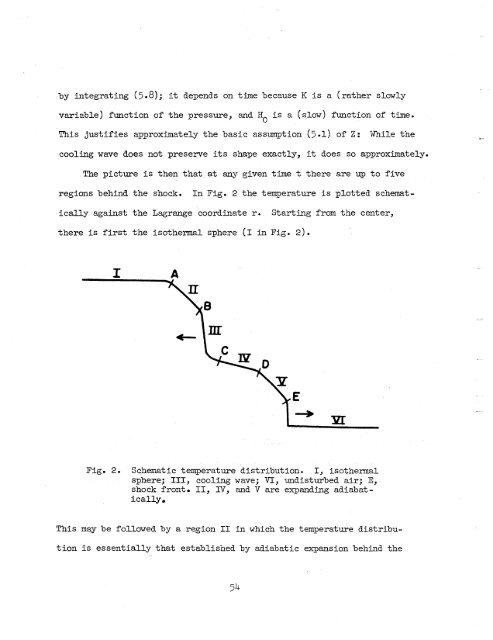Theory of the Fireball
Theory of the Fireball
Theory of the Fireball
Create successful ePaper yourself
Turn your PDF publications into a flip-book with our unique Google optimized e-Paper software.
y integrating (5.8); it depends on time because K is a (ra<strong>the</strong>r slowly<br />
variable) function <strong>of</strong> <strong>the</strong> pressure, and H is a (slow) function <strong>of</strong> time.<br />
0<br />
This justifies approximately <strong>the</strong> basic assumption (3 .l) <strong>of</strong> 2: While <strong>the</strong><br />
cooling wave does not preserve its shape exactly, it does so approximately.<br />
The picture is <strong>the</strong>n that at any given time t <strong>the</strong>re are up to five<br />
regions behind <strong>the</strong> shock. In Fig. 2 <strong>the</strong> temperature is plotted schemat-<br />
ically against <strong>the</strong> Lerange coordinate r. Starting from <strong>the</strong> center,<br />
<strong>the</strong>re is first <strong>the</strong> iso<strong>the</strong>rmal sphere (I in Fig. 2) .<br />
Fig. 2. Schematic temperature distribution. I, iso<strong>the</strong>rmal<br />
sphere; 111, cooling wave; VI, undisturbed 'air; E,<br />
shock front 11, IY, and V are expanding adiabat -<br />
ically.<br />
This may be followed by a region I1 in which <strong>the</strong> temperature distribu-<br />
tion is essentially that established by adiabatic expansion behind <strong>the</strong>
















